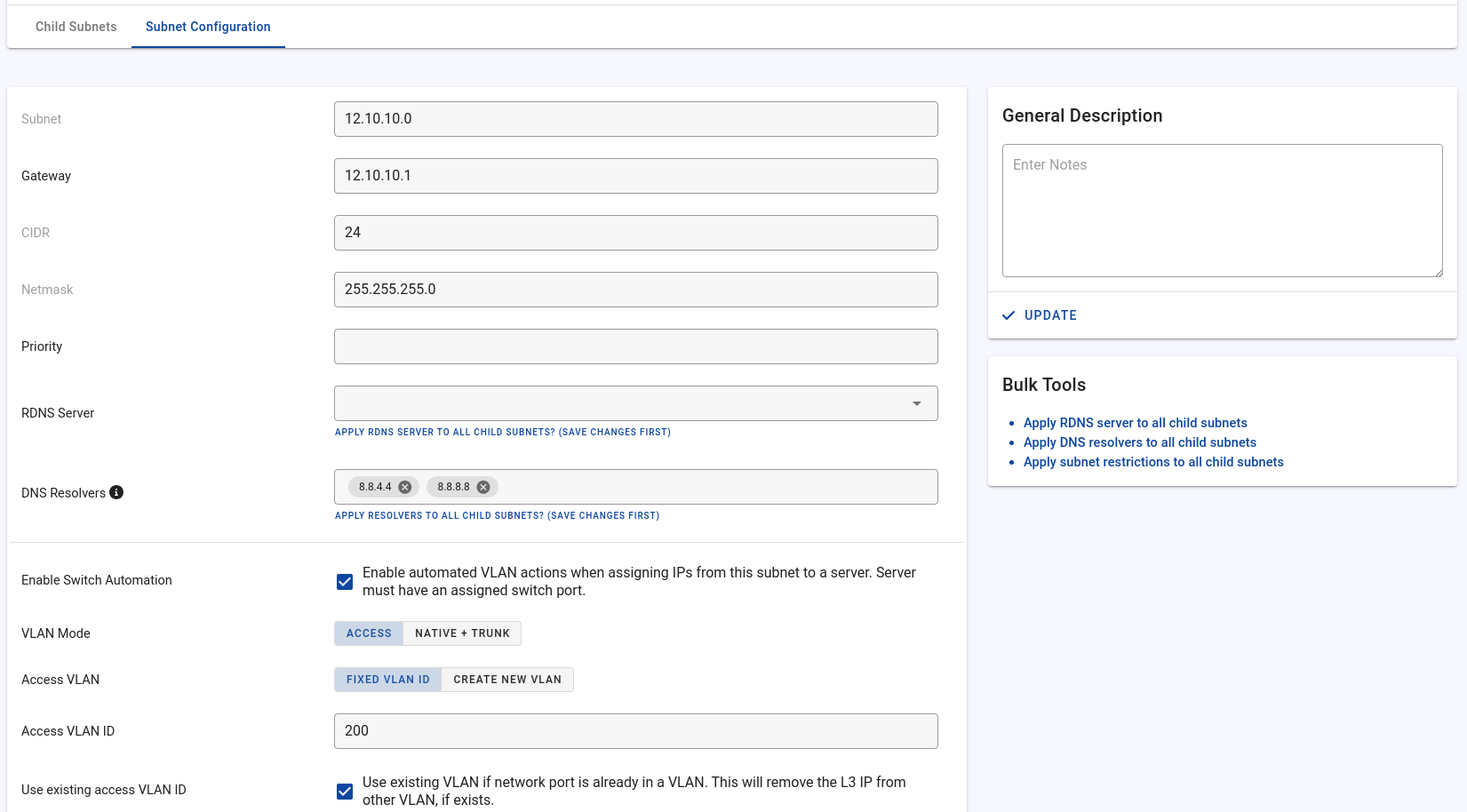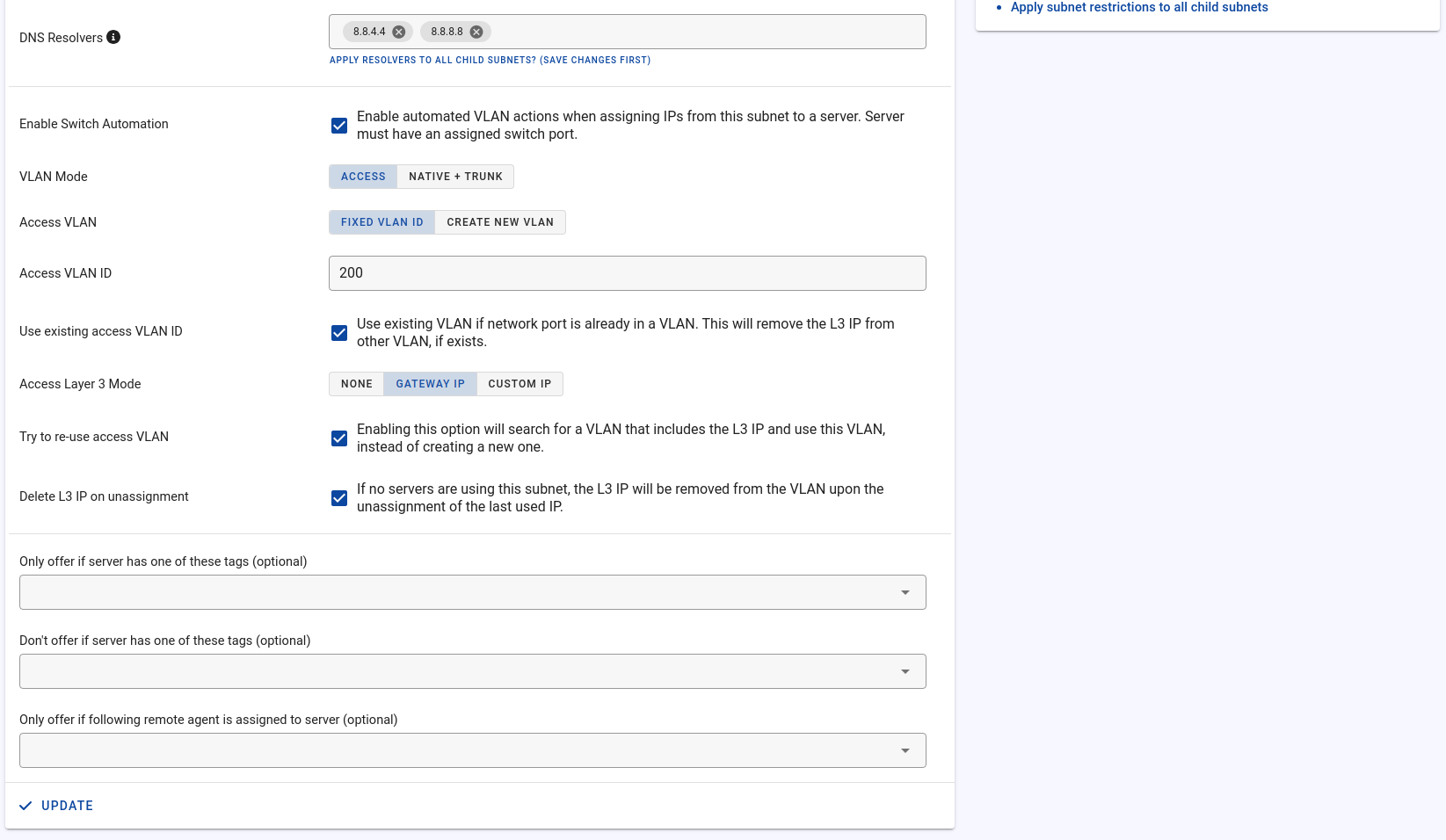Subnet Configuration
The subnet configuration page is located on the subnet detail page, in the tab "Subnet Configuration".
You can update the following fields:
- Gateway
- Priority
- RDNS Server
- Limit subnet availability via tags and remote agent assignments
You can also store notes about subnets. The notes are only visible to your account.
Priority Field
The priority field is taken into account when creating virtual servers, processing dynamic IP assignments, and determining the subnet order when adding IP assignments to servers.
Automatic IP assignment respects the priority. Subnets with a higher priority are preferred, meaning IP addresses from the subnet with the highest priority are assigned first. If no IP address from the subnet with the highest priority is available, the subnet with the next highest priority is used.
RDNS Server
To enable RDNS functionality for the subnet, you must use this field to assign one of your RDNS servers to the subnet. Once the RDNS server has been assigned, it is possible to manage RDNS entries via Tenantos. Tenantos supports RDNS for IPv4, individual IPv6 addresses, and IPv6 subnets.
Beneath the RDNS server input field, a button is available that can be used to set the defined RDNS server for all child subnets. Please note that this button is only visible if the subnet has child subnets (currently only supported for IPv6). Note that the button is available even if no RDNS server has been set, allowing the RDNS server to be unset for all child subnets at once.
Further information:
DNS Resolvers
Up to three DNS resolvers can be stored. IPv4 and IPv6 resolvers are supported. If no resolvers were defined when adding the subnet, the Google DNS resolvers are stored.
The DNS resolvers are configured on the operating system when the operating system is reinstalled via PXE or if an IP is obtained via DHCP.
Beneath the DNS resolvers input field, a button is available that can be used to set the defined DNS resolvers for all child subnets.
Exclude from Dynamic IP Assignments
If enabled, the subnet will be excluded from dynamic IP assignments. Dynamic IP assignments can be performed via the API and are also supported by the WHMCS module.
Switch Automation Settings
Please refer to the Switch Automation documentation for more information.
Limit Subnet Availability
If you are running multiple separate networks (for example, servers in different data centers), the following three options are available to determine which subnets to offer for which servers:
- Only offer if server has one of these tags
- Don't offer if server has one of these tags
- Only offer if following remote agent is assigned to server
When using the remote agent option, note that if multiple agents are assigned to a server, it is sufficient if one of the selected agents is assigned to the server. All three options can be used individually or simultaneously.
Bulk Tools
If a subnet has been divided into smaller subnets, bulk tools are available on the right side, below the notes input field, that allow the subnet configuration to be transferred to all child subnets. These tools can help to quickly and efficiently apply the same configuration settings to multiple subnets at once.
The following tools are available:
- Apply RDNS server to all child subnets
- Apply DNS resolvers to all child subnets
- Apply subnet restrictions to all child subnets

